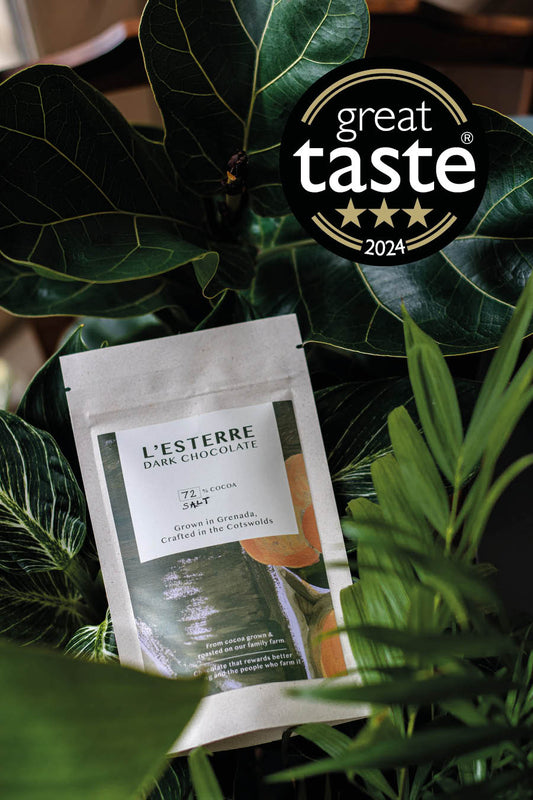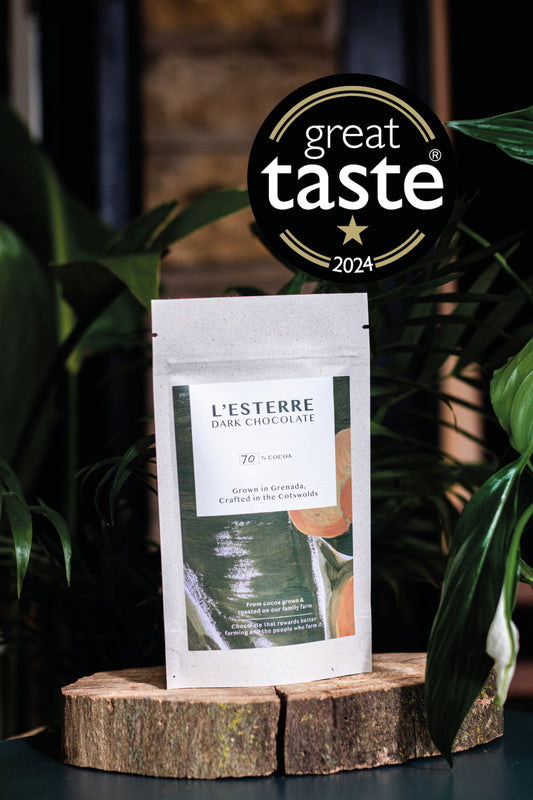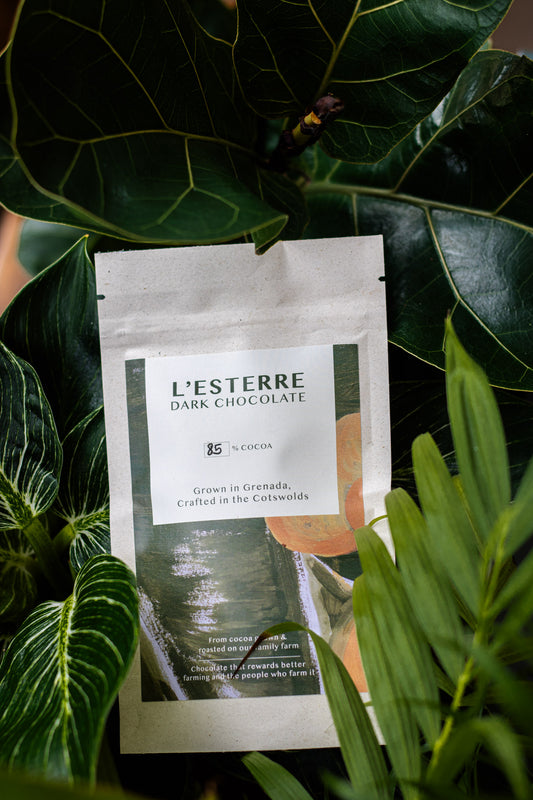
Regenerative vs. Monoculture Farming
Once upon a time the uniformed lines and neatly arranged aesthetically pleasing single crop farms looked so pleasing to my eye. Visiting L'Esterre growing up I couldn’t understand why nutmeg trees were planted beside to guava, peas and clove trees in this confused formula. Didn’t it make more sense to have all the nutmeg trees clustered together and citrus groves elsewhere?
Most agricultural models globally follow this monoculture method, though I have grown to learn that its ability to sustain the world’s growing demand is nearing is nearing its breaking point. Regenerative agriculture however could be it successor and the answer to sustain both the worlds growing population in parallel to replenishing the earth’s nutrients.
Here’s the breakdown of Monoculture vs. Regenerative:
Monoculture
What it is: The agricultural term is defined as the practice where a single crop, livestock species or plant of one species is grown. it is used in both industrial and organic farming.
Why its used: The farmer can specialise and achieve maximum yield for one species. Its uniformity makes it easy to harvest and in doing so is less labour intensive and cost effective. It also easily lends itself for many of these processes to be mechanised. It results in higher yields at lower costs to the farmer because the process is easily standardised, making it more profitable to the farmer.
Its effect on the environment: Most of the time synthetic fertilisers are used because the soil that grows single crops does not have enough nutrients to sustain and replenish itself to produce a healthy harvest. Fertilisers step in to provide a set repertoire of nutrients - usually nitrogen, phosphorous and potassium. As a result the nutrient content of the soil is narrowed and thus becomes dependent on the fertiliser for nutrients to grow a healthy crop. This method depletes soil microbial diversity (also decreasing the nutritional content of the crop itself). The chemicals in the fertiliser could also pollute the groundwater from neighbouring ecosystems. Less nutrient-dense soil means crops are more vulnerable to extreme weather conditions and any external factors not accounted for. More water is also needed to irrigate as malnourished soil loses its ability to retain water.
Regenerative
What it is: Regenerative Agriculture as an umbrella term is defined as the conservation and rehabilitation to the food farming system. Within this there are various approaches to grow in a regenerative way (terms defined below) .
Why its used: It encourages diversity in the food system as opposed to monoculture farming. It focuses on topsoil regeneration (which is decreasing at a rapid rate within the UK) by increasing biodiversity in the soil and improving the water cycle. The end result is a high quality crop yield with more nutritional value per calorie than monoculture farming without the need for fertilisers.
Its effect on the environment: This approach emphasises a circular growing model: the mixed cultivation of crops add a diverse set of nutrients into the soil, increasing its fertility and so in-turn higher crop yield. It also makes it more resilient to climate change as it strengthens its ability to retain water, lessening the possibility of soil erosion and doesn’t pollute neighbouring ecosystems.

Why did monoculture farming come about in the first place?
It became a popular method employed by industrial agriculture because of its high yield and its ability to provide quick returns with little investment. After the second world war, our food system became devoted to producing high yields to sell food as cheaply as possible, which also greatly depleted its nutritional content (an even bigger story for another time).
It’s down to simple economics of supply and demand: After the war there were global food shortages and not enough calories to go around. All that demand with not enough supply to meet it meant that food became very expensive. To be able to provide food quickly and at an affordable price, agricultural policies were rewritten to encourage farmers to plant crops like corn and soy in order to produce more calories per person. This allowed the price of food to fall as supply was able to meet demand.

Why isn’t the whole world employing regenerative agriculture?
This idealistic approach of growing food I have been told is a far cry in its ability to feed the world, that it can only really exist on a small-scale. Our global food system is organised around the objective of selling large quantities of calories as cheaply as possible. For these reasons regenerative agriculture is not enviable in that it can also be particularly labour intensive. At L’Esterre and other cocoa & spice farms around Grenada, because we follow the regenerative agricultural method of agroforestry, it becomes labour-intensive which sadly is not very desirable as it can become quite costly. To enable an easier transition from monoculture to regenerative farming on a global scale, we must adapt technology and machinery to work with methods of regenerative agriculture. Using mechanised, efficient processes will make it less labour intensive and time efficient which will ultimately make it more profitable for the farmer and an affordable price for the end consumer.

The future of farming: where do we go to from here?
Though we have a way to go yet for the development of machinery and smart technologies in farming to produce efficient and higher returns, the power of small scale farms can make a real difference in the interim. The future is clustering small-scale farmers who turn their small plots into biodynamic food forests, increasing productivity and year-round access to income.

Useful Terms & Definitions
Agroforestry - the growing of both trees and agricultural crops on the same piece of land. They are designed to conserve, diversify and sustain vital economic, environmental, human and natural resources.
Edible Ecosystems - an ecologically-designed community of mutually beneficial perennial plants intended for human food production.
Food Forests: a diverse planting of edible plants that attempts to mimic the ecosystems and patterns found in nature.
No-till/no-dig Farming - an agriculture technique for growing crops without disturbing the soil through tillage. No-dig gardening is minimal disturbance to the soil so that its natural processes can be preserved.
Circular Economy - in the food world this means mimicing natural systems of regeneration so that waste does not exist.
Biodiversity - the variety of plant and animal life in the world of a particular habitat. A level of which is considered to be important or desirable.
Soil Quality - the continued capacity of soil to function as a vital living ecosystem that sustains plants, animals and humans.
Rewilding - restoring an area of land to its natural uncultivated state, particularly the reintroduction of species of wild animals that have been driven out
Topsoil - the upper, outermost layer of soil with the highest concentration of organic matter and microorganisms and is where most of the Earth’s biological soil activities occurs. It is composed of mineral particles, organic matter, water and air.
_______________________________________
Recommended Reads
Wilding by Isabella Tree
In Defence of Food by Michael Pollan
The Fate of Food: What we’ll eat in a Bigger, Hotter, Smarter World by Amanda Little
The Secret Network of Nature: The delicate balance of all Living Things by Peter Wohlleben
Now you are educated, start spreading the word. Be the change you want to see: no change is too small.



